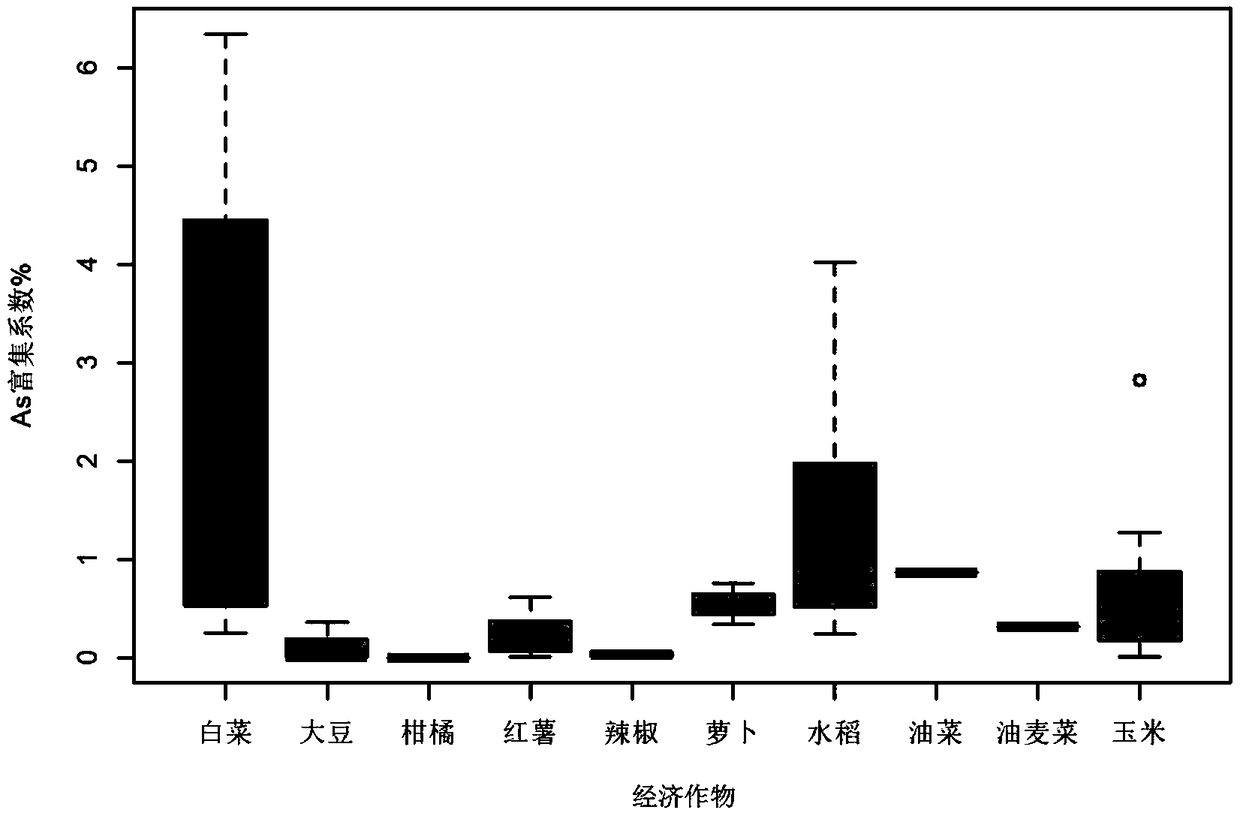Method for remediating arsenic polluted soil by interplanting hyperaccumulators and commercial crops
A technology of super-enrichment plants and economic crops, applied in the restoration of polluted soil, etc., can solve the problems of unfavorable farmland soil subsequent utilization, damage to the soil biological environment, low efficiency, etc., to avoid light competition, obvious environmental benefits, high The effect of economic benefits
- Summary
- Abstract
- Description
- Claims
- Application Information
AI Technical Summary
Problems solved by technology
Method used
Image
Examples
Embodiment 1
[0040] Example 1: The effect of arsenic accumulation on centipede grass and citrus in the pot experiment
[0041] Two citrus varieties (Aiyuan 38, Daya orange) and a centipede plant were selected as the test plants, and the typical arsenic-contaminated soil in Shimen, Hunan was selected as the test soil. Divided into single-cropping centipede grass, single-cropping citrus (Aiyuan 38), single-cropping citrus (Daya tangerine), limited intercropping centipede grass-citrus (Aiyuan 38), limited intercropping centipede grass-citrus (Daya tangerine) , open intercropping centipede grass-citrus (Aiyuan No. 38) and open intercropping centipede grass-citrus (Daya mandarin), with five replicates for each treatment, a total of 35 pots.
[0042] Among them, as the root systems of two plants are not isolated in the open space, the two root systems are completely intersected, water, nutrients and mobile heavy metals can circulate freely, and interspecific underground competition and promotion...
Embodiment 2
[0043] Example 2: Arsenic accumulation effect of planting centipede grass and citrus in large field
[0044] Three citrus varieties (Aiyuan No. 38, Daya tangerine, and Shimen local citrus) and a centipede plant were selected as the test plants, and the arsenic-contaminated soil in Shimen, Hunan was selected as the test soil. Divided into single-cropping centipede grass, single-cropping citrus (Aiyuan No. 38), mono-cropping citrus (Daya tangerine), mono-cropping citrus (Shimen local citrus), intercropping centipede grass-citrus (Aiyuan No. 38), intercropping centipede grass- Seven treatments of citrus (Taya tangerine) and intercropping centipede grass-citrus (Shimen local citrus).
[0045] The upper part of the centipede meadow and citrus were harvested in mid-October, and the heavy metal content in the upper part of the centipede meadow and citrus whole fruit, orange peel and orange flesh was determined. From Figure 5 and Figure 7 As can be seen from the data of arsenic c...
PUM
 Login to View More
Login to View More Abstract
Description
Claims
Application Information
 Login to View More
Login to View More - R&D
- Intellectual Property
- Life Sciences
- Materials
- Tech Scout
- Unparalleled Data Quality
- Higher Quality Content
- 60% Fewer Hallucinations
Browse by: Latest US Patents, China's latest patents, Technical Efficacy Thesaurus, Application Domain, Technology Topic, Popular Technical Reports.
© 2025 PatSnap. All rights reserved.Legal|Privacy policy|Modern Slavery Act Transparency Statement|Sitemap|About US| Contact US: help@patsnap.com



